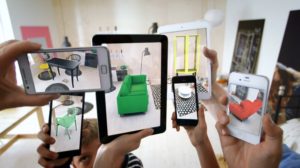While the virtual reality (VR) industry has been doing a better job over the last couple of years at getting its message across regarding the wonders (and many use cases) of the technology, that isn’t necessarily translating into consumer usage, a new survey by Artec 3D has found.

A developer and manufacturer of professional 3D scanners and software, Artec 3D analyzed survey responses from more than 1,000 U.S. consumers on the use of VR and augmented reality (AR) technologies for retail applications.
Uncovering several trends among respondents, the survey found that while all of them knew and understood the technologies, a whopping 66 percent still hadn’t tried it. Of those that had, the highest use was for entertainment at 10 percent, followed by shopping at 5 percent.
Other stats from the survey included:
- Consumer awareness of existing AR and VR features within the following retail apps: Amazon (37%); Wayfair (16%); Ikea (15%); Lowes (14%); Gap (10%); and Sephora (7%).
- 50% of respondents would find an interactive 3D model of a product more helpful than images when shopping online.
- 38% would find AR and VR most helpful for shopping for large home furniture & décor
- When asked when AR and VR will become common tools for shopping online, 26% of consumers stated within the next year and 43% within the next five years.
- 18% of consumers believe that within the next year AR and VR will become common tools for shopping within physical stores, while 32% believe this will happen within the next five years.
“Although utilization of 3D technologies in the retail space is in its infancy, consumers are expecting these capabilities to be integrated within a short timeframe,” said Artyom Yukhin, president, and CEO of Artec 3D in a statement. “Choosing the right 3D scanning technology is going to be critical for retailers, as they look to build out their library of 3D models to populate AR and VR environments. The solutions they choose will need to capture objects that range in size, from those that can fit in your hand to large pieces of furniture, with high accuracy and resolution and in full colour. Our handheld 3D scanners fit these needs and are intuitive, minimizing the training needed to create a professional 3D model.”
Even with companies like Blippar going into administration or Starbreeze AB having to refocus its efforts, there’s still a lot to look forward to over the next few years for, VR and AR alike. As consumer interest grows, VRFocus will be there to report on the latest findings.

